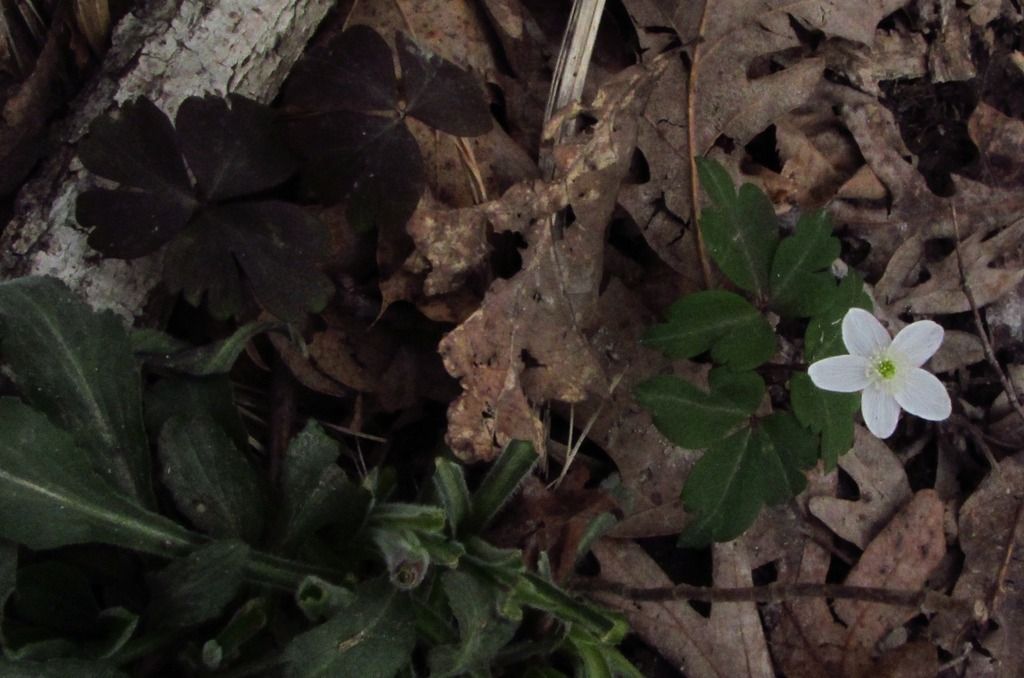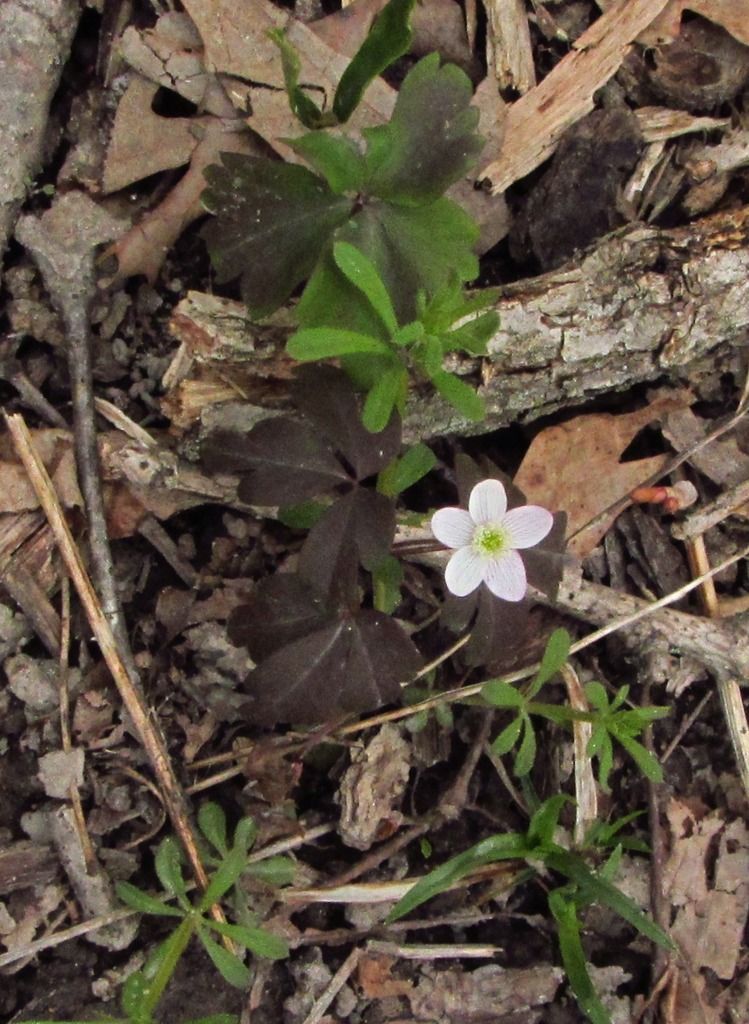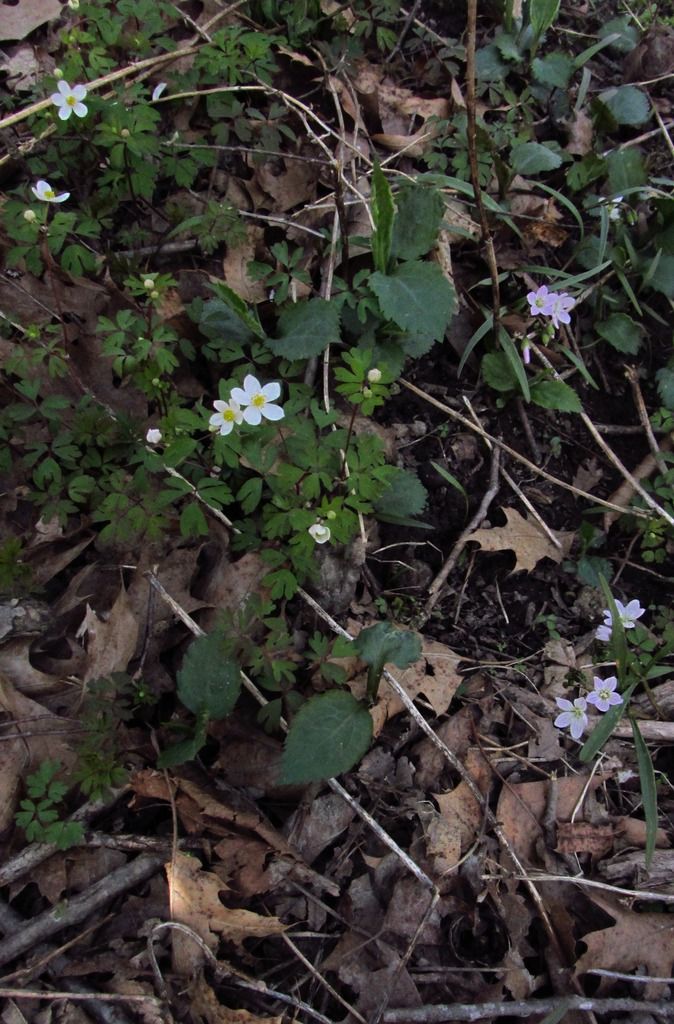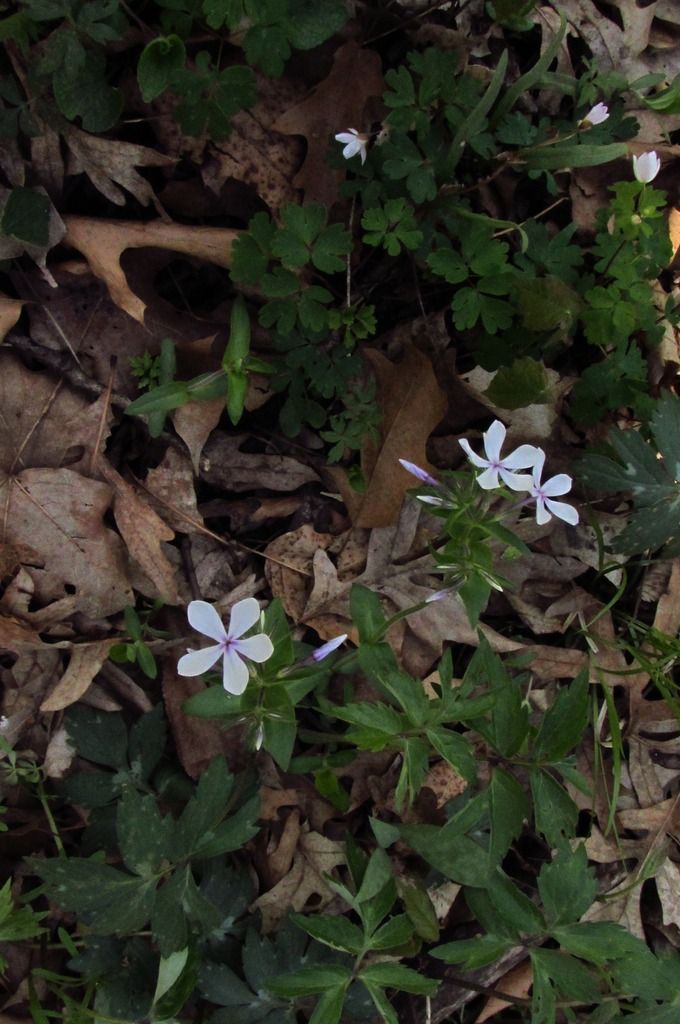Early spring wildflowers have given way to mid-spring bloomers across Iowa. In prairie habitats, Eileen Miller has found some hoary puccoon and fringed puccoon blooming. In central Iowa wooded areas, May apples (umbrella plants), Virginia waterleaf, sweet cicely, and wild geranium are near their peak. Sweet William are still prevalent too, helping to compensate for the end of this year’s spectacular Virginia bluebells show. Buds are visible on many native plants that will flower in the late spring or early summer, including wild grapes and one of my favorites, Solomon’s seal.
A few rue anemone flowers are still blooming in Windsor Heights, which brings me to today’s featured plant. False rue anemone (Enemion biternatum) is easily confused with rue anemone. Both plants are among the earliest spring wildflowers to bloom and continue to flower for many weeks after other early flower have gone. Both plants initially have reddish-brown foliage, which turns green before long. Neither rue anemone nor false rue anemone flowers have petals. What look like petals are white or pinkish-white sepals. The Illinois Wildflowers, U.S. Wildflowers, and Eloise Butler Wildflower Garden websites all contain more detailed botanical descriptions as well as tips on distinguishing false rue anemone from rue anemone. Short version: the leaves are shaped differently, and rue anemone flowers usually have more sepals than the five sepals on false rue anemone flowers.
I’ve enclosed several photos of false rue anemone after the jump. This post is also a mid-week open thread: all topics welcome.
False rue anemone typically thrives in woodland habitats. Its flowers are usually white. As mentioned above, what appear to be petals are in fact five white sepals.
The day I was taking pictures at the Ledges State Park in Boone County, most of the false rue anemone shots that turned out had flowers tinged with pink. Here you can see false rue anemone soon after it has emerged; to the left, the foliage is still brown.
Here the foliage is transitioning from brown to green. The stripes on the sepals reminded me of spring beauty, but the stamens at the center of the flower look different.
In this shot you can see false rue anemone to the left and the deeper pink spring beauty to the right. The leaves on spring beauty are an entirely different shape.
Although this isn’t a great image of the false rue anemone near the top of the frame, I was struck by the unusually white Sweet William (blue phlox) flowers. Usually those are a much deeper purple. Near the bottom of this photo, you can see the splotchy, notched leaves of Virginia waterleaf and the mottled leaves of dogtooth violets, also known as trout lilies.





